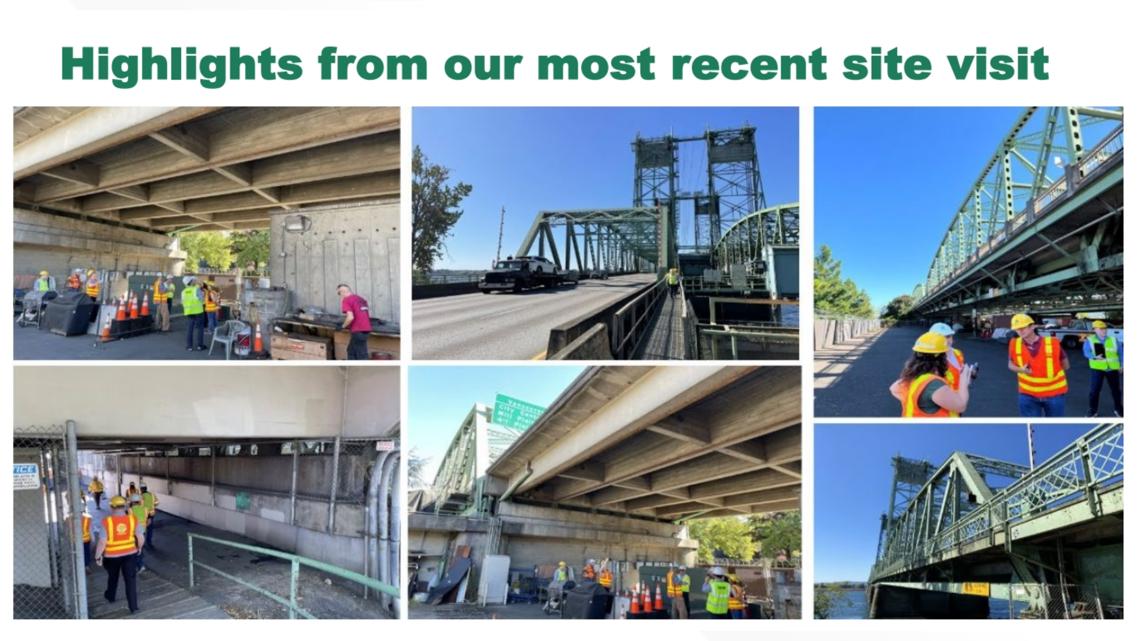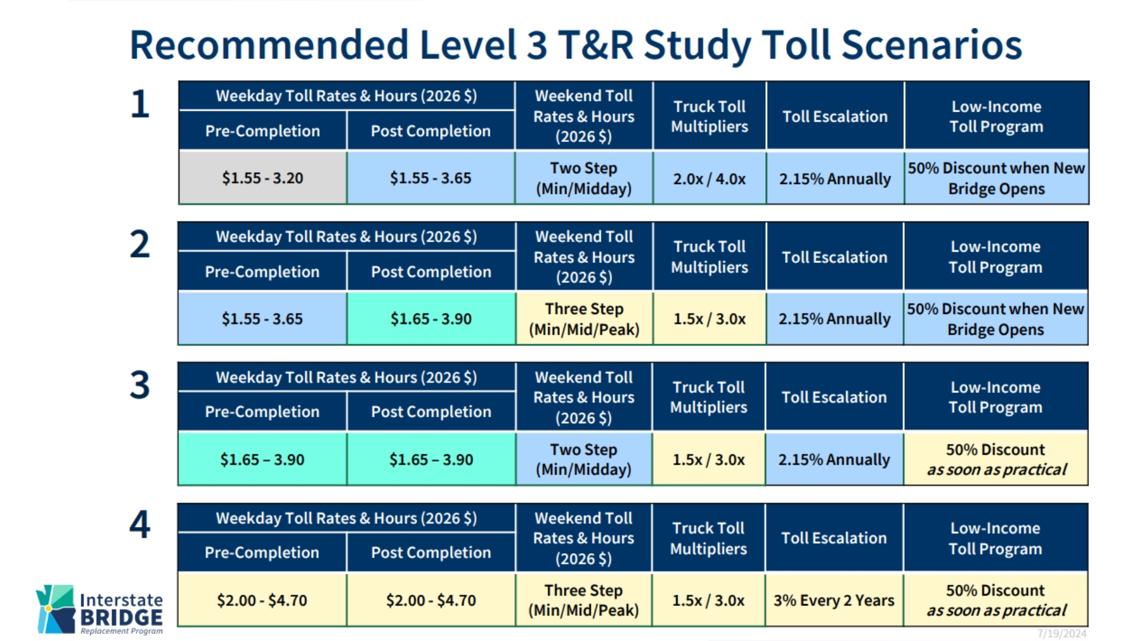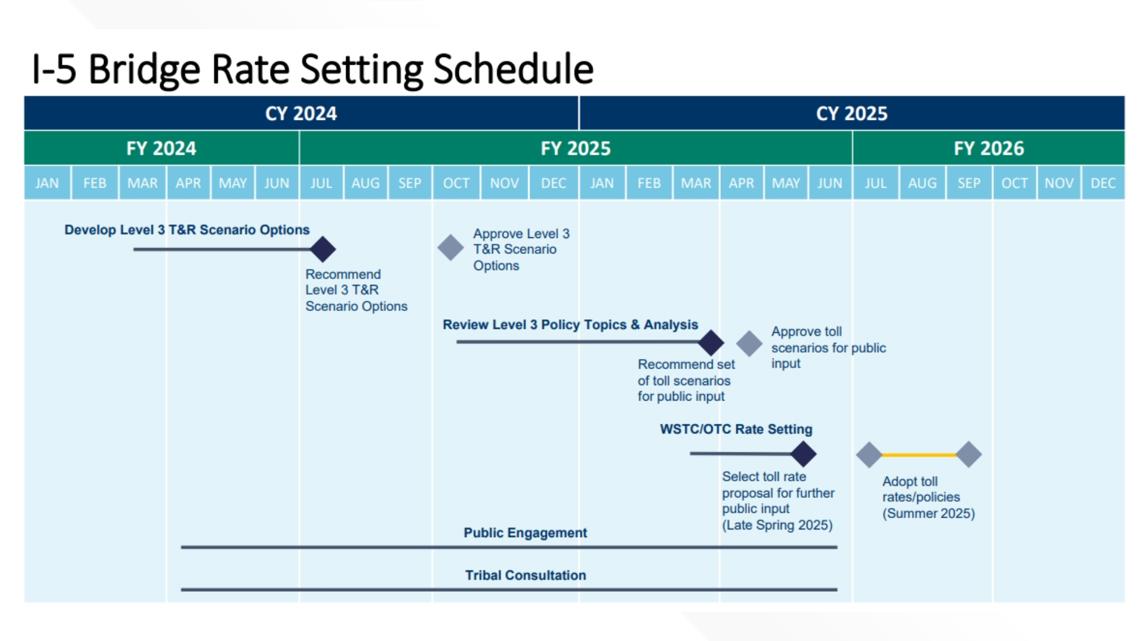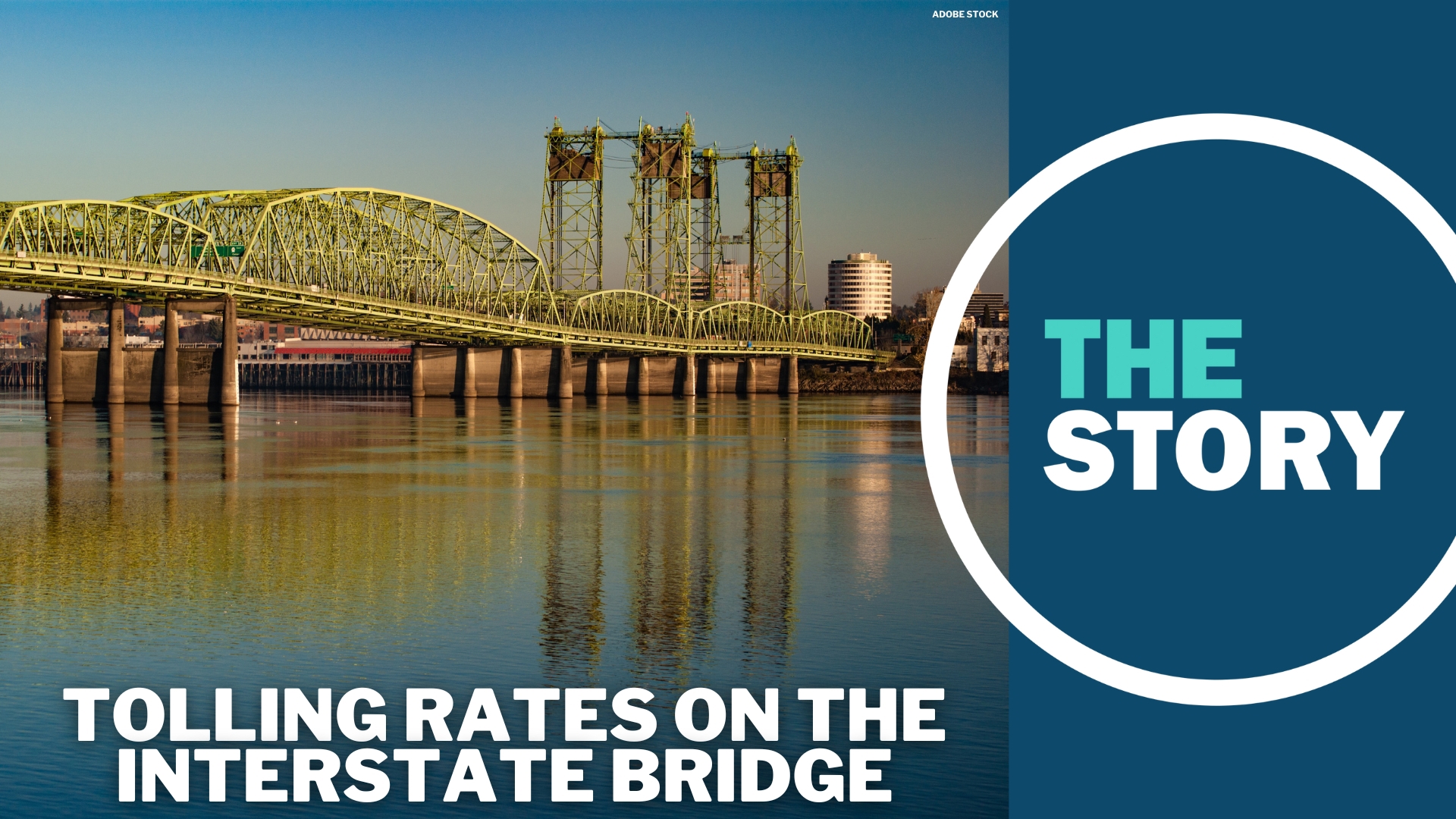VANCOUVER, Wash. — Despite Oregon Gov. Tina Kotek's pause on plans to toll Portland-area interstates earlier this year, tolls are coming sooner than rather than later. Partly, that's because 2026 isn't all that far off and the Oregon Department of Transportation desperately needs funding one way or another — but it's also because the Interstate Bridge was never included in the governor's tolling moratorium, and tolling has long been a part of the planning for its replacement.
Tolls meant to help fund the Interstate Bridge Replacement project between Portland and Vancouver are likely to start as early as spring 2026 on the current twin bridges, just as construction gets underway on the new ones. This means that free crossings over the Columbia River on I-5 will only be around for another 18 months or so.
On a recent visit to the Interstate Bridge, the Washington Department of Transportation brought along its tolling vendor to inspect the site and identify where their tolling gantries will go. Those are the overhangs, which will detect whether someone has a tolling pass to be charged, or otherwise photograph license plates to send the bill wherever they're registered.


This week, the Washington and Oregon transportation commissions voted to advance four tolling scenarios to the final level of detailed traffic and revenue analysis. The prices aren't yet final, but they are in the ballpark.
When it comes to the final toll prices, the public will be able to give input starting next spring. Then, the prices will be voted on again by the two state transportation commissions next summer.
New tolling projects are paused until January 2026 due to an order from Gov. Kotek. However, she specifically carved out the I-5 bridge project, so it is able to add tolls before that pause ends if needed.
How did we get here?
When the Washington Legislature approved this tolling concept in 2023, they had some conditions, explained Carl See, deputy director of the Washington State Transportation Commission. Tolling was allowed on both existing and replacement bridges, but revenue had to stay with the project, and tolling was prohibited on the Washington side of I-205.
That last piece remains an interesting wrinkle in all of this. It's possible that when tolling begins on I-5, drivers will be incentivized to move over to I-205 instead, where there are no tolls to deal with.
Back in March, the director of the Oregon Department of Transportation told The Story's Pat Dooris that Oregon does not have plans to toll I-205 either. This week, an ODOT spokesperson reiterated that there are no such plans.
When it comes to Oregon authorizing tolling for the I-5 bridge, the state transportation commission will conduct a final vote in January, though approval is likely a foregone conclusion. However, the law that gives the state authority to toll the I-5 bridge actually stretches back to the ill-fated previous bridge replacement project, the "Columbia River Crossing."
Much of what Oregon wants to do with the new Interstate Bridge can be traced back to a law passed back in 2013, according to ODOT assistant director Travis Brouwer. Those include a provision that tolls must be reduced after the bridge construction debt is paid off — but it does not require that the tolls be removed entirely, and it's not very specific about the reduction amount. That will be up to the transportation commissions.
The "projection period" that helps craft the tolling scenarios goes all the way to the year 2060, which means tolling on the Interstate Bridge won't budge for decades once it's in place.
Tolling scenarios
During a recent meeting, transportation officials broke down the four different tolling scenarios they're putting forward. The first one, they explained, stands apart for having "higher truck toll multipliers." That means vehicles with more than two axles will be paying a higher rate, bringing down rates for everyone else.
It's worth noting, too, that all of the scenarios will include something called "toll escalation," meaning they'll go up each year to keep ahead of inflation. The numbers presented in these scenarios, even if they list "post-completion" rates, do not reflect how rates will have escalated by the time bridge construction is complete.
The modeling for these scenarios assumes that the new bridge will open by 2033, or roughly eight years of construction, and tolls will be escalating each of those years.


Scenarios two and three have a lower truck toll multiplier, which means they're more expensive for everyone else. Otherwise, they're separated by their weekend rates at different times of day: scenario two has three different rates, while scenario three has just two, the same as scenario one.
There are also differences in the discount for low-income commuters. Under scenario two, there's a 50% discount only when the new bridge opens. In scenario three, the discount applies "as soon as practical."
The last one, scenario four, has hands-down the highest rates for commuters. However, it does not include a jump when the new bridge is complete, and escalation is 3% every two years, instead of 2.15% every year. Discounts for low-income drivers would again launch "as soon as practical."
According to officials, the reason why rates are higher in this last scenario is that it's the one option meant to help the project if costs really go up, which is quite possible based on recent history.
The IBR's conceptual finance plan anticipates tolling will bring in $1.24 billion, which is what the first three scenarios account for. Scenario four would be closer to $1.6 billion.
The committee said that an updated cost estimate for the project is likely coming next summer, which would better inform the tolling numbers. The IBR team is looking at 28 different construction contracts for the bridge project, from start to finish.
Review of the four tolling scenarios will continue until next spring, then the public input portion will arrive in late spring before there's a vote on the final toll rates and policies by the Oregon and Washington transportation commissions.



